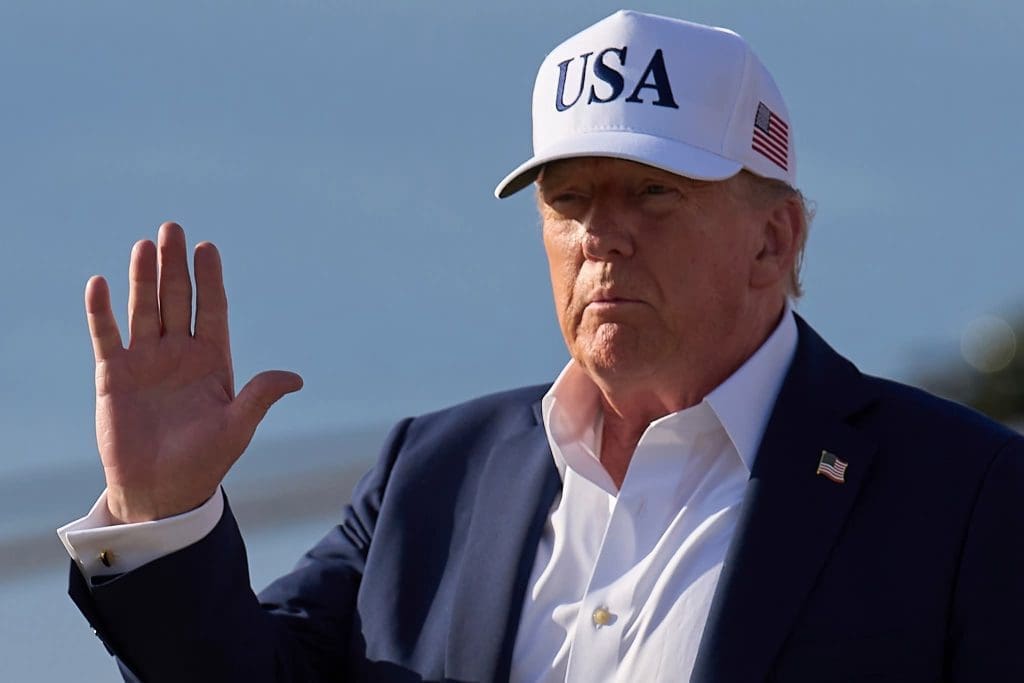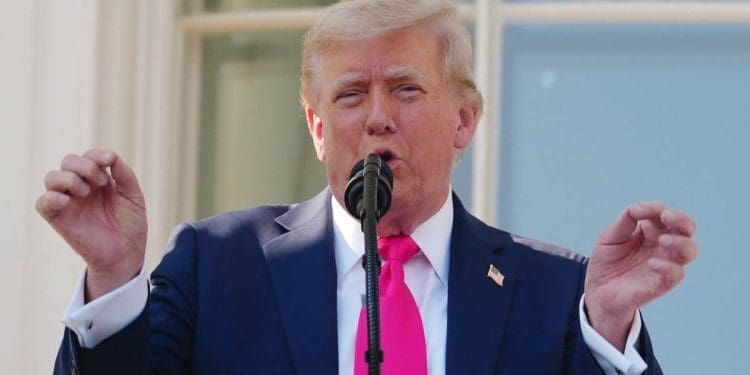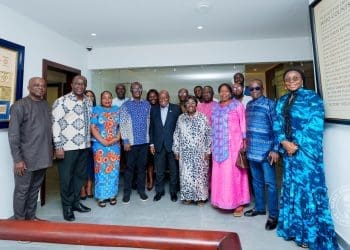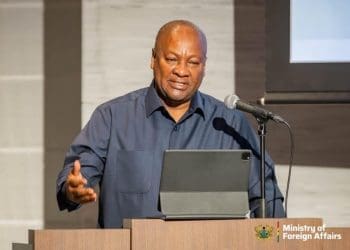U.S. President Donald Trump warned that any country aligning itself with the “anti‑American policies” of the BRICS alliance would face an additional ten percent tariff on its exports to the United States.
The tariff excess, Trump declared, would be applied without exception to any nation that sides with the bloc’s initiatives contrary to U.S. interests.
“Any country aligning themselves with the Anti‑American policies of BRICS,” the president wrote on his official social media account, “will be charged an ADDITIONAL 10% tariff. There will be no exceptions to this policy.”
The blunt ultimatum underscores Trump’s ongoing battle to reshape global trade relationships in favour of what he describes as American workers and industries
New deadline shifts tariff start date to August 1
The president’s announcement follows a series of stop‑start negotiations and suspended tariff threats that have characterized U.S. trade policy since April.
Initially, the administration set a July 9 deadline for countries to clinch bilateral trade agreements or face punitive import taxes. Trump’s new statement, however, pushes the actual implementation of additional tariffs to August 1—allowing just three weeks for countries to reach acceptable deals.
U.S. Commerce Secretary Howard Lutnick confirmed on Monday that the augmented tariff regime would indeed begin next month. “The taxes will come into force on August 1,” he told reporters, clarifying the timeline for industry and foreign governments alike. Treasury Secretary Scott Bessent, meanwhile, described the coming days as “very busy” as his inbox filled with offers and counterproposals from nations eager to avert the ten‑percent levy.
Letters to trading partners
In addition to setting the new August 1 start date, President Trump said he would dispatch official letters to roughly a dozen trading partners.
These letters, he indicated, will spell out the exact tariff rates each country will face unless a satisfactory agreement is reached. Bessent painted the correspondence as cordial but firm invitations to negotiate: “We welcome you as a trading partner,” he said, “and here’s the rate—unless you want to come back and try to negotiate.”
According to senior administration aides, the letters will go to countries that have publicly signalled interest in BRICS policies or otherwise failed to advance timely trade accords with Washington.
While details of which nations will receive letters have not been released officially, reports suggest that governments from South America, Africa, and parts of Asia are among those at risk of the additional duties.
EU engages in high‑stakes talks
The European Union, long a focal point of Trump’s trade ire, appears determined to limit any fresh disruptions.
Bloomberg and other outlets report that the EU is negotiating a provisional continuation of a ten‑percent tariff on most goods shipped to the U.S. beyond the July 9 deadline, while simultaneously seeking a scaling‑back of existing levies on cars, steel, and aluminium.
Under the tentative framework, U.S. customs duties on European automobiles would fall from 27.5 percent to ten percent up to an annual quota of 100,000 vehicles, with zero tariffs on aerospace components.
In exchange, the EU would maintain or adjust import taxes on American beef, ethanol, and other agricultural products.
European Commission President Ursula von der Leyen spoke with President Trump by phone last week, and a White House statement described the exchange as “good.”
Nevertheless, the spectre of a fifty‑percent import tax looms until a formal agreement is signed. Should talks falter, EU officials warn that retaliatory measures could follow, threatening to escalate trade tensions further.
Japan warned of potential 35% tariff
Japan, another key U.S. trading partner, is also under the presidential spotlight. Only days ago, Trump threatened to impose a thirty‑percent to thirty‑five‑percent tariff on Japanese exports if Tokyo failed to secure a trade deal by last Wednesday. Japanese government sources have confirmed that intensive negotiations continue in Washington and Tokyo, covering automobiles, electronics, and agricultural goods. While both sides describe progress as constructive, time is running short, and Tokyo officials acknowledge that any failure to compromise could trigger the punitive levies.

UK, Vietnam, and China deals
The administration has nonetheless touted a handful of successes in recent weeks.
In June, the United States finalized a bilateral pact with the United Kingdom that slashes duties on British cars and parts from twenty‑seven point five percent to ten percent under a 100,000‑vehicle quota, and eliminates tariffs on aerospace shipments. London, in return, agreed to remove import taxes on U.S. ethanol and beef.
Similarly, a deal with Vietnam took effect, imposing a twenty‑percent U.S. tariff on Vietnamese goods destined for American markets while lifting all levies on U.S. exports to Vietnam.
Crucially, the agreement targets trans‑shipment—a practice in which goods from third countries are routed through Vietnam to evade duties—by imposing a forty‑percent tariff on any such cargo.
Perhaps most notably, U.S. negotiators struck a partial agreement with China, lowering certain American tariffs on Chinese imports from one hundred forty‑five percent to thirty percent, while Beijing reduced its duties on some U.S. products from one hundred twenty‑five percent to ten percent.
China also scrapped several non‑tariff barriers, including restrictions on exporting critical minerals to the United States, although broader trade frictions remain unresolved.
A history of stepped‑up levies
Since assuming office earlier this year, President Trump has used import taxes as a central tool of economic statecraft.
In April, he announced a sweeping set of new tariffs on goods from dozens of nations—some duties as high as fifty percent—in what he termed “Liberation Day.”
That announcement immediately sent shockwaves through global markets, prompting business leaders to warn of supply‑chain disruptions and retaliatory actions.
Shortly after unveiling his “Liberation Day” tariffs, Trump suspended the most stringent measures to allow three months of negotiations before the July 9 deadline.
During that interim period, the United States maintained a ten‑percent tariff on most imports, heightening the stakes for any country that failed to secure a bilateral accord by the cutoff.
His weekend reminder that further penalties await BRICS‑aligned nations underscores the administration’s willingness to leverage U.S. market access as a bargaining chip.
BRICS expansion challenges Dollar’s dominance
The president’s warning comes as the BRICS alliance has expanded significantly since its founding five years ago.
In addition to the original members—Brazil, Russia, India, China, and South Africa—the bloc now includes Egypt, Ethiopia, Indonesia, Iran, Saudi Arabia, and the United Arab Emirates. Collectively, BRICS members comprise over half of the world’s population and wield growing economic influence. Some inside the group have even discussed creating alternative currency arrangements to rival the U.S. dollar in international trade.
In April 2024, then‑President Trump threatened one hundred percent tariffs on BRICS nations that pursued a separate currency.
This weekend’s announcement echoes that earlier stance while signalling readiness to confront not only currency proposals but any policy decisions the administration deems “anti‑American.”
Global business leaders voice concerns
International Chambers of Commerce deputies have cautioned that disentangling from major trading partners like China is easier said than done.
Andrew Wilson, the ICC’s deputy secretary‑general, told the BBC’s Today programme that China’s deep integration into sectors ranging from electric vehicles to rare earth minerals makes it exceptionally difficult for countries to shift supply chains. He argued that even if nations sought to avoid Chinese suppliers for political reasons, practical alternatives are limited.
“The dominance China has in a number of sectors—EVs, batteries, particularly rare earths and magnets—means there are no viable alternatives to Chinese production at scale,” Wilson said, underscoring the challenges prospective tariff targets face if they attempt to recalibrate trade away from Beijing.
Arbitration and legal battles on the horizon
Several BRICS members have already lodged formal complaints with the World Trade Organization, arguing that U.S. tariffs contravene global trade rules.
The European Union is preparing a parallel challenge, while emerging economies in Africa and Latin America weigh similar actions. WTO disputes often take years to resolve, giving tariffs a prolonged impact before any ruling can be enforced.
At home, some U.S. business groups have threatened litigation in federal courts, challenging the president’s authority to impose extra duties without explicit congressional approval.
Legal scholars point to a complex interplay between executive power, statutory trade law, and international obligations that could produce protracted courtroom battles.
What lies ahead for U.S. trade policy?
As August approaches, the clock is ticking on Trump’s ultimatum. While letters outlining final tariff rates will send a clear signal to capitals from Brasilia to Riyadh, the ultimate outcome hinges on each country’s calculation of economic pain versus political expediency.
For nations heavily dependent on U.S. markets, the choice may be stark: accede to bilateral terms or absorb higher costs that could stoke domestic inflation, hamper exports, and invite retaliation.
President Trump’s strategy represents a high‑stakes gamble that the prospect of lost market access will force trading partners to renegotiate longstanding agreements.
Should the approach succeed, the White House argues, it will reinforce America’s negotiating leverage and help revitalize domestic manufacturing.
Yet critics warn it risks isolating key allies, fracturing multilateral trade frameworks, and triggering a spiral of protectionism that undermines global growth.
With the BRICS alliance on one side and a resurgent American tariff regime on the other, the global trading system stands at a precarious crossroads.
This summer’s diplomatic marathon—and the arbitration and legal challenges that follow—will determine whether President Trump’s tariff gambit yields lasting victories or sows new divisions in the international economic order.











